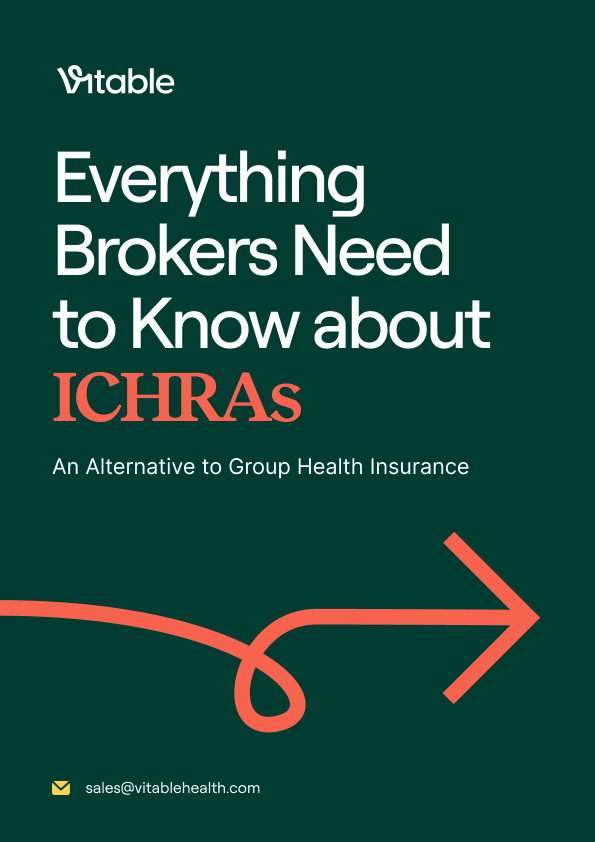How Direct Primary Care (DPC) Works with Minimum Essential Coverage (MEC)

If you're exploring ways to offer health benefits that keep costs low while meeting ACA requirements, you’ve likely come across Minimum Essential Coverage (MEC) plans. When designed properly, MEC plans can help employers stay compliant; however, they often fail to provide employees with access to the everyday care they actually need.
Employees want to know that if they get sick, need a prescription, or have a health concern, they can see a provider without long wait times, high out-of-pocket costs, or confusing networks. So, how do you offer that kind of benefit without paying the high premiums tied to traditional group health plans from major carriers like Aetna or UnitedHealthcare? That’s where Direct Primary Care (DPC) comes in.
In this article, we’ll explain what Direct Primary Care (DPC) is, how it works combined with a MEC plan, and how you can give employees access to quality primary care while staying fully ACA-compliant and keeping costs low for your budget.
Direct Primary Care (DPC) Overview
Direct Primary Care (DPC) is a subscription-based healthcare model that gives employees access to essential primary care services without going through traditional insurance. It also gives employers a more predictable, manageable way to offer healthcare, especially when paired with a MEC plan.
Instead of billing insurance for each visit, DPC operates on a flat monthly fee that covers most of the everyday care people actually use, such as routine checkups, sick visits, vaccinations, lab work, and care for minor injuries. For employees, that means no copays, no deductibles, and no surprise bills. For employers, it means a predictable cost structure and a benefit employees truly value and use.
The specific services included in a DPC membership may vary depending on the Direct Primary Care provider. It's important to review what's covered before selecting a plan. Below is a list of common services that are and aren’t included in DPC memberships.
What’s included:
- Routine checkups and wellness visits
- Sick visits and acute care for minor illnesses or injuries
- Chronic condition management
- Lab work and diagnostic testing
- Vaccinations and preventive care
- Mental health coaching and therapy (varies by provider)
- Same-day or next-day appointments
- Virtual or in-person visits (depending on provider)
- More access to providers via messaging or phone
What’s not included:
- Hospitalization or emergency room care
- Specialist visits (e.g., gastroenterologists, cardiologists, dermatologists)
- Complex procedures, surgeries, and outpatient services
- Advanced imaging (e.g., MRIs, CTs, ultrasounds)
- Insurance coverage or cost-sharing for major medical events
- Dental and vision care
- Certain medications
- Cosmetic surgeries or procedures

Download 2025 Employer Guide to ICHRA
Vitable’s ICHRA Guide gives employers a clear, step-by-step resource for building smarter, ACA-compliant benefits.
This guide explains how ICHRAs work, who qualifies, and how Vitable simplifies setup, onboarding, reimbursements, and compliance — while giving employees more flexibility, control, and care.

Download Vitable’s 2025 Broker’s Guide to ICHRA
The Broker Guide to ICHRAs is a comprehensive resource that helps brokers understand, sell, and manage Individual Coverage HRAs with confidence.
This guide covers everything from compliance and class design to administration flows, case studies, and how Vitable streamlines quoting, enrollments, and reimbursements for brokers, employers, and employees.
What Is a MEC Plan?
A MEC plan is a type of health insurance designed to ensure employees receive a baseline level of preventive health coverage, including services like annual screenings, immunizations, and certain wellness benefits. MEC plans can also satisfy the Affordable Care Act (ACA) requirements, commonly known as the Employer Mandate.
Under the ACA, businesses with 50 or more full-time or full-time equivalent employees, referred to as Applicable Large Employers (ALEs), are required to offer health coverage that:
- Meets MEC standards: provides basic preventive services
- Provides Minimum Value (MV)
- Cover at least 60% of the total cost of expected medical services
- Include substantial coverage for physician care, hospital services, and inpatient/outpatient care
- Is affordable: Cannot cost more than 9.02% of an employee's household income
Failing to meet these requirements can result in significant IRS penalties for non-compliance.
What is and is not included in a MEC Plan?
The specific services covered in a MEC plan may vary. Below is a list of basic services that are and aren’t included in a MEC plan.
What’s included:
- Annual wellness visits
- Preventative screenings and immunizations
- Contraceptive services
- Tobacco cessation programs
- Basic women’s wellness care
- Basic pediatric services
To meet Minimum Value (MV), a MEC plan must also include substantial coverage for major medical services, such as hospitalization, emergency care, and physician services.
What’s not included:
- Primary care visits for illness or injury
- Chronic condition management
- Mental health services
- Prescriptions
Common examples of MEC plans
MEC includes a broad range of health plans, but the most common MEC plan is the preventative-only plan, also known as “skinny” or “bare bones” coverage. Preventative-only MEC plans provide very little coverage beyond basic preventative care. They typically do not offer routine services such as doctor visits, lab tests, prescriptions, or mental health support.
It’s also important to note that not every MEC plan will meet the Minimum Value standard of the Employer Mandate, which can still leave employers at risk of Part B penalties. Working with a trusted professional to help you design a fully compliant MEC plan is often the best practice.
- Preventive-only plans from major carriers
- Employer-sponsored group plans and COBRA
- Individual market coverage (ACA-qualified plans purchased through the Health Insurance Marketplace)
- Government-sponsored programs (Medicaid, Medicare, and CHIP)
- Plans predating the ACA (known as “grandfathered plans”)
- TRICARE (military coverage)
- Certain student health plans
What is not considered a MEC plan?
Not all health plans meet ACA requirements. In general, any plan that isn’t major medical coverage or ACA-regulated does not qualify as an ACA-compliant MEC plan. While some employer-sponsored plans may meet MEC standards, most limited or supplemental policies do not.
Examples of plans not considered MEC:
- Short-term health insurance
- Medical discount plans
- Limited-benefit plans (unless specifically structured as MEC)
- Critical illness or accident-only insurance
- Health care sharing ministries
- Travel medical insurance
- Dental and vision-only plans
- Indian Health Services coverage (on its own)
- Certain Medicaid programs (e.g., family planning Medicaid, emergency-only Medicaid, TB-specific Medicaid)
Why MEC alone doesn’t work
While a well-designed MEC plan can help employers meet ACA compliance, it’s not built to provide comprehensive or practical care for the everyday workers who use them. These plans focus primarily on preventive services and catastrophic coverage, offering little to no support for common needs like sick visits, prescriptions, or chronic condition management.
That kind of coverage may satisfy a regulation, but it doesn’t support your people. To truly support your workforce and strengthen your business, it’s important to pair MEC with accessible primary care.
Direct Primary Care + MEC Plan: How it Works
Pairing Direct Primary Care (DPC) with a Minimum Essential Coverage (MEC) plan creates a well-rounded, cost-effective benefits package that delivers both ACA compliance and valuable healthcare access for your employees.
Here’s how it works:
- The MEC plan, designed to meet the Minimum Value (MV) requirement, satisfies the Employer Mandate.
- The DPC membership fills in the gaps by providing employees with access to everyday care, including sick visits, chronic condition management, mental health support, prescriptions, and same-day appointments, all at no cost to the employee. DPC memberships are not insurance, so there are no copays, coinsurance, or deductibles.
Together, this combination offers a smart alternative to expensive traditional group health plans.
Limitations
As mentioned earlier, not all MEC plans fully meet ACA compliance requirements. Some MEC plans fail to satisfy the Minimum Value requirement or fall short of affordability standards, leaving employers vulnerable to potential IRS penalties.
Meanwhile, Direct Primary Care (DPC) memberships, while incredibly valuable for improving access to care, are not ACA-compliant on their own and cannot be used as a standalone solution to meet the employer mandate. Additionally, depending on how your plan is structured, certain surgeries, procedures, or specialist care may not be covered.
DPC, combined with MEC, can be a powerful and cost-effective strategy when designed properly. However, to ensure full compliance and meaningful access to care, it’s essential to work with a trusted health benefits provider who understands how to structure the right plan for your workforce and budget.
Vitable’s DPC + MEC Health Benefits
Vitable is a health benefits platform making healthcare better for the everyday worker. We help businesses of all sizes design and implement affordable, ACA-compliant health benefit packages that your employees will actually value and use. Unlike other providers, primary care is at the core of everything we do. Every Vitable plan includes our enhanced Primary Care membership, which goes far beyond basic access.
Vitable’s Primary Care Membership offers employees:
- Access to a dedicated team of licensed nurse practitioners
- $0 copays and no deductibles
- Unlimited primary care visits (routine care, sick visits, checkups)
- Same-day virtual appointments
- Access to 1,000+ prescriptions at no cost
- Chronic disease management
- Urgent care services
- Unlimited mental health coaching
- Mental health therapy
- Free dependent coverage (family coverage at no additional cost)
- Labs, screenings, and vaccinations
- Episodic and ongoing care coordination
Vitable’s Primary Care Membership offers employers:
- Flat-rate pricing for predictable budgeting
- Flexible plan designs and benefit packages
- A user-friendly employer dashboard
- Fewer high-cost claims by reducing ER and urgent care visits
- Streamlined onboarding and open enrollment support
- Higher employee retention and satisfaction
- Expert guidance to support ACA compliance and avoid IRS penalties
- A stronger recruitment edge—especially for hourly, part-time, and frontline roles
When you partner with a trusted health benefits provider like Vitable, you get more than a plan—you get a strategy. We’ll help you navigate your options, stay compliant, reduce costs, and give your team access to real, everyday care.
See Plans Starting at $1/Day per Employee
Get Started with Your DPC + MEC Plan Today
Whether you’re a small business looking for an ACA-compliant plan, or a growing company aiming to improve your benefits without breaking the bank, Vitable’s flexible health plans give you a scalable, affordable way to offer real healthcare—without the high costs or administrative complexity of traditional group coverage.
Ready to start offering better benefits? Get a free quote today!
Frequently Asked Questions
Is a Direct Primary Care Membership ACA-compliant?
No. While a DPC membership provides valuable access to everyday care, it does not meet the Affordable Care Act (ACA) requirements on its own. DPC does not cover major medical events like hospitalization or surgery, and does not meet the Minimum Value (MV) standard required by the ACA. However, when paired with a Minimum Essential Coverage (MEC) plan, it becomes part of a compliant and comprehensive healthcare solution for your workforce.
Do MEC plans cover primary care services?
No. Most MEC plans only cover preventive services—like annual checkups, screenings, and vaccinations—as required under the ACA. They do not typically include coverage for sick visits, chronic condition management, prescriptions, or ongoing primary care. That’s why many employers pair MEC plans with DPC memberships to provide more meaningful coverage.
Who benefits from Direct Primary Care?
Both employees and employers. Employees get fast, easy, and affordable access to care they’ll actually use. Employers reduce healthcare costs, boost retention, and offer a competitive benefit without the high cost of traditional group insurance.
Can I avoid ACA penalties by offering a MEC plan and DPC together?
Yes, if designed properly. A MEC plan that meets both Minimum Value and affordability requirements, paired with a DPC membership, can enhance care access and help you avoid ACA penalties.
Ready to learn more?
Stay ahead with the latest insights on healthcare, benefits, and compliance—straight to your inbox.
Get a quote
Get a personalized health benefits quote tailored to your company’s unique needs.
Vitable helps employers provide better healthcare to their employees and dependents by improving accessibility, cost, and quality.
